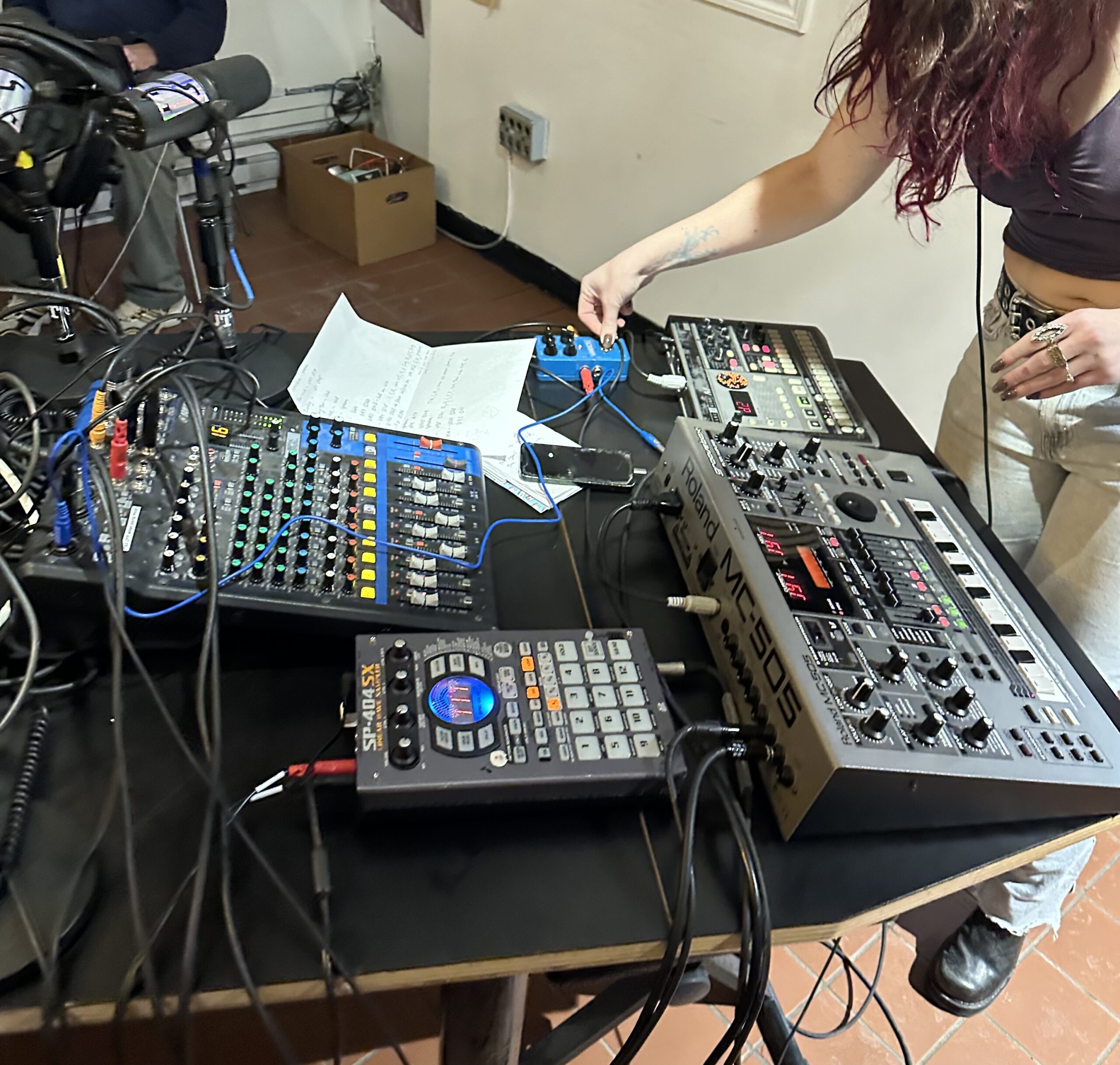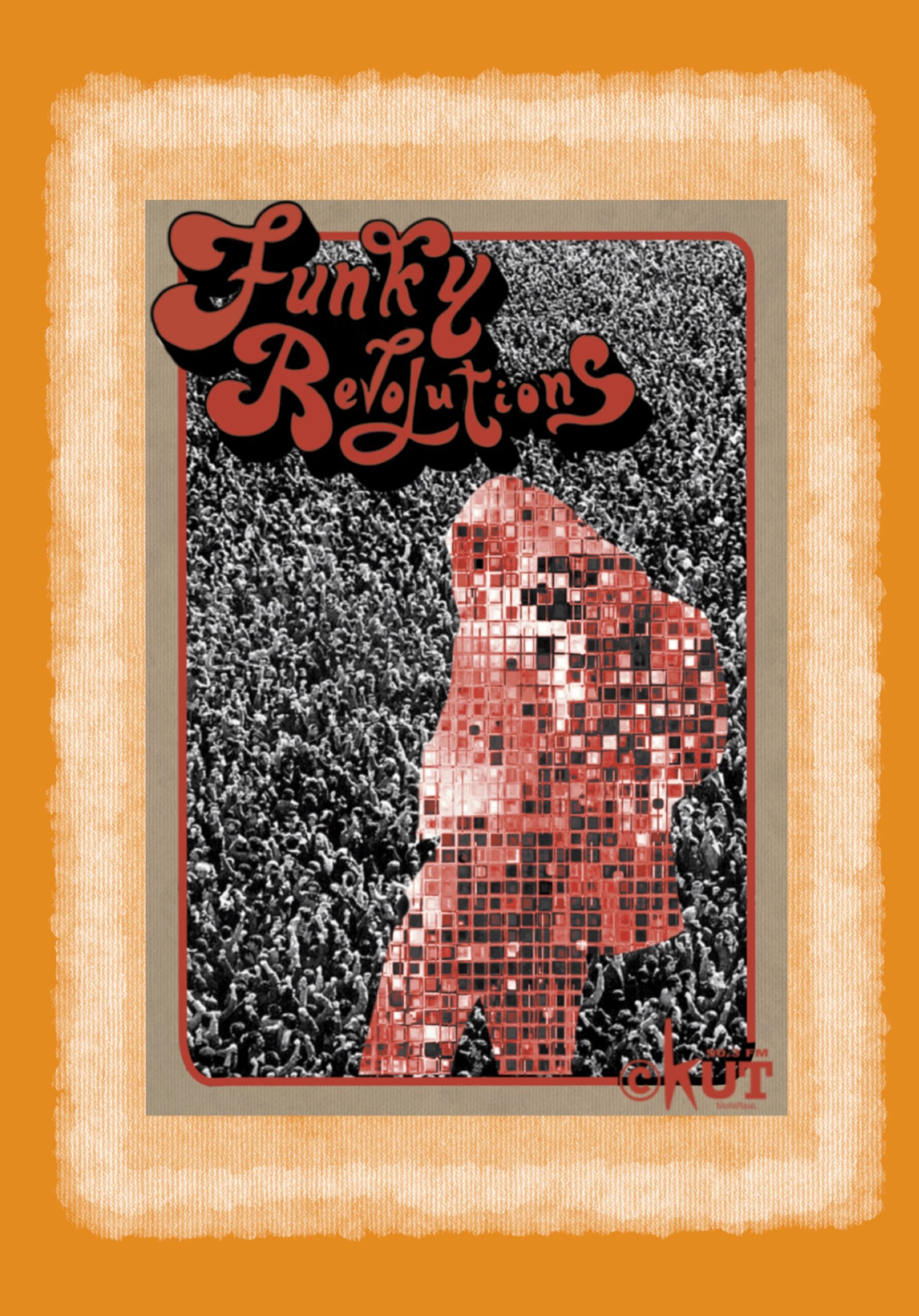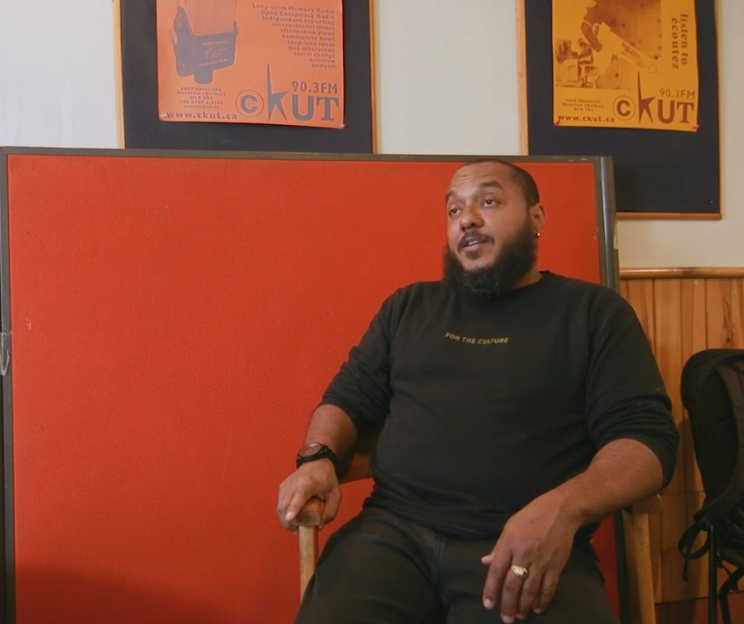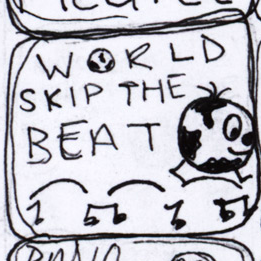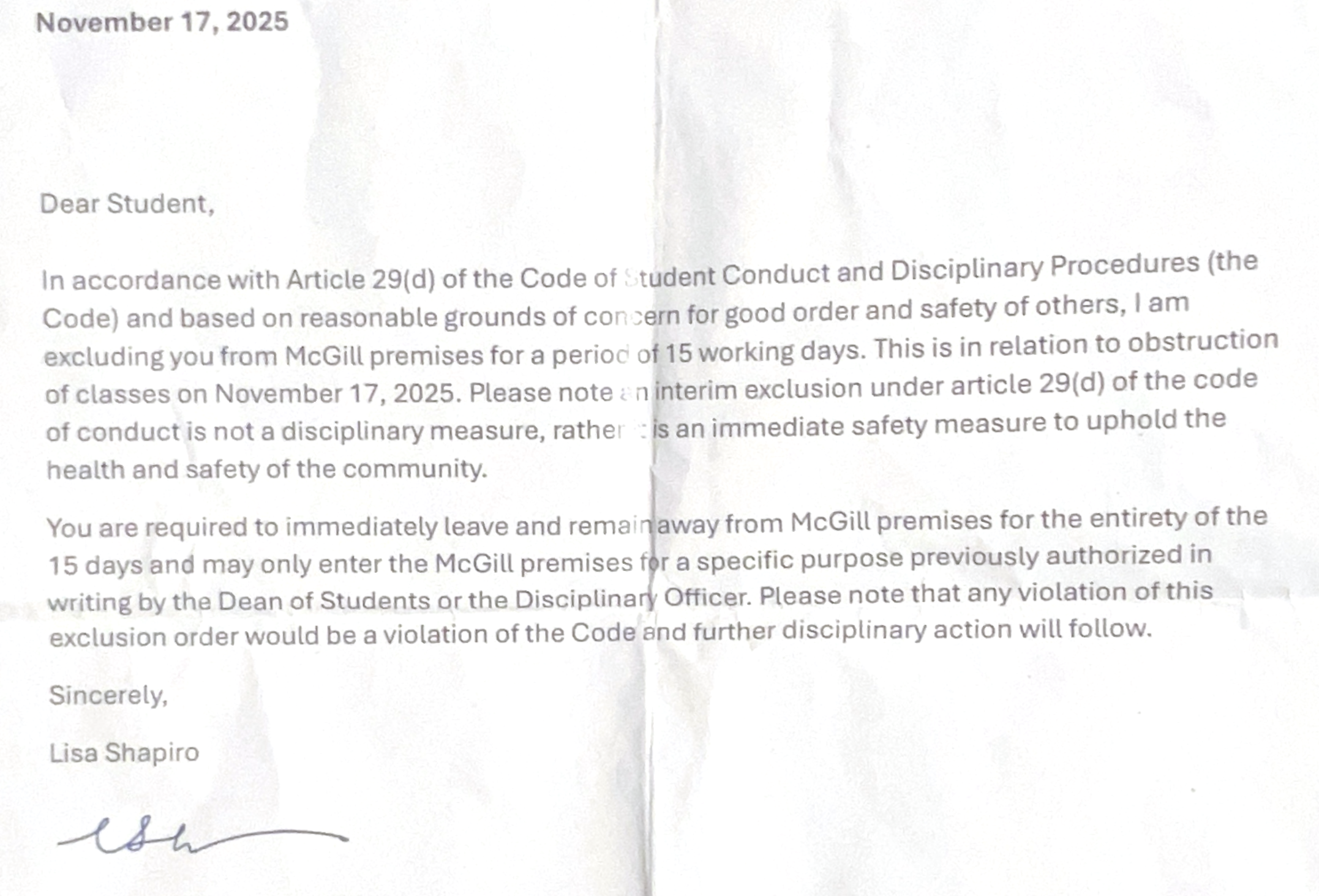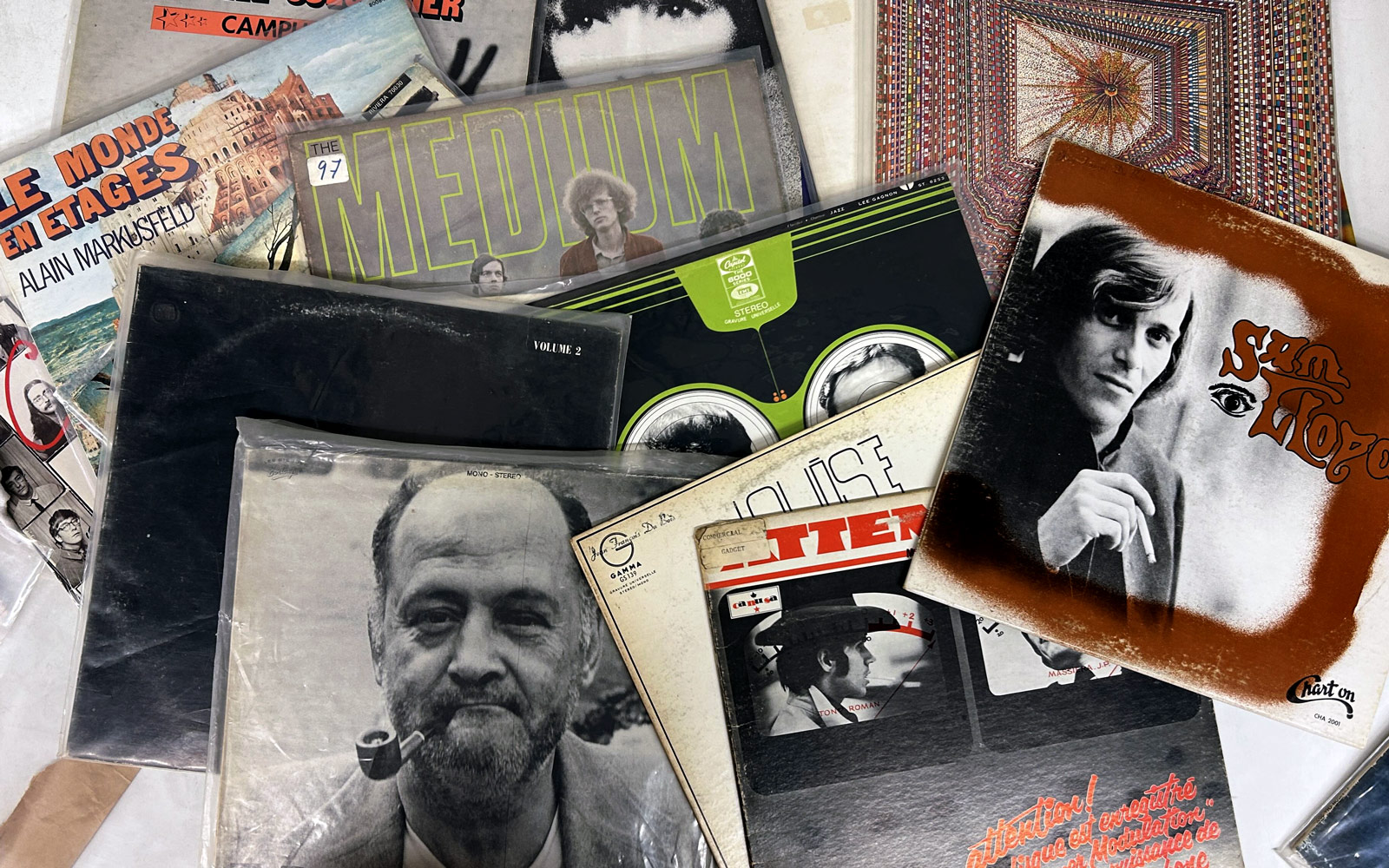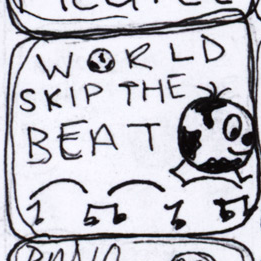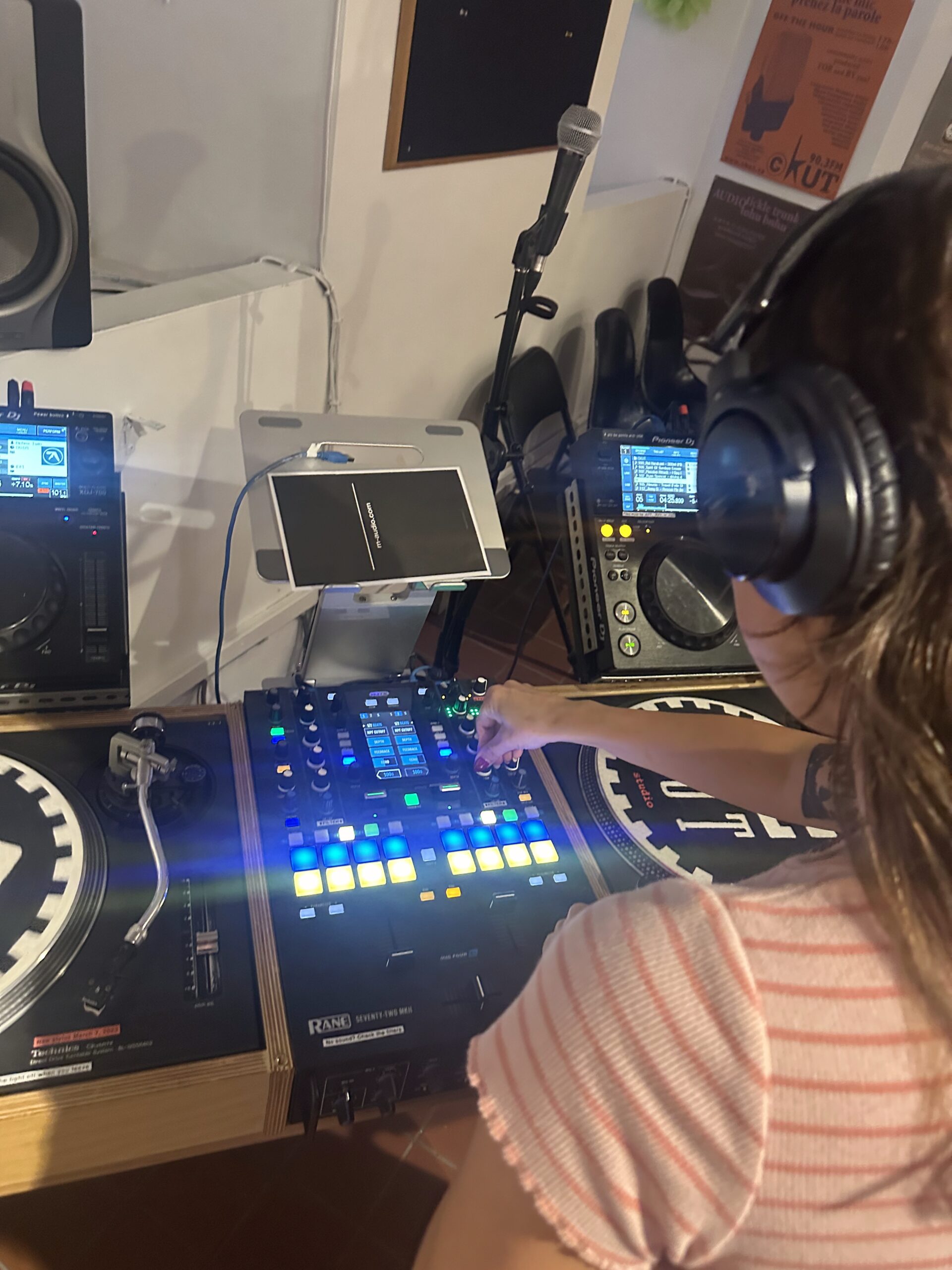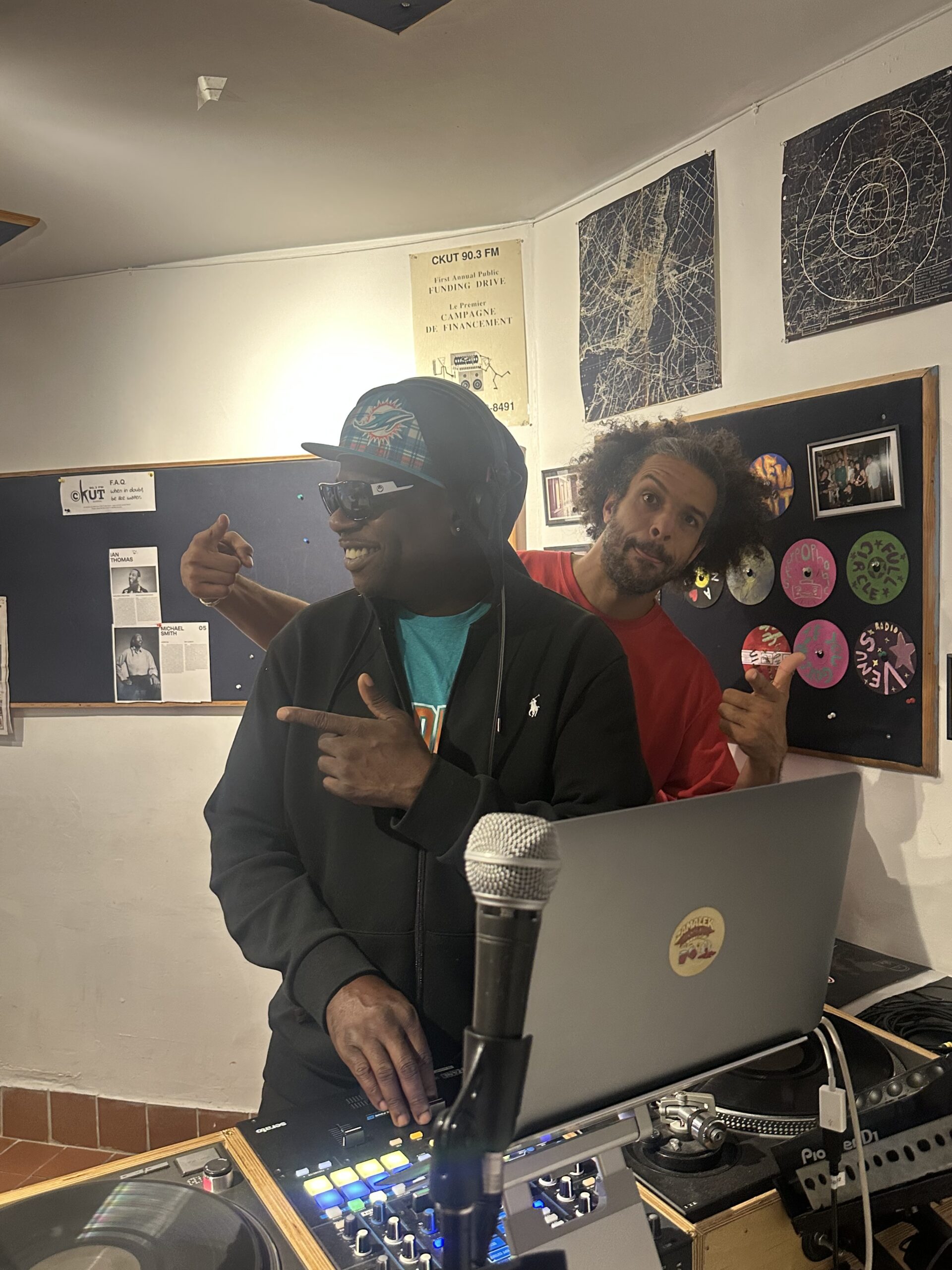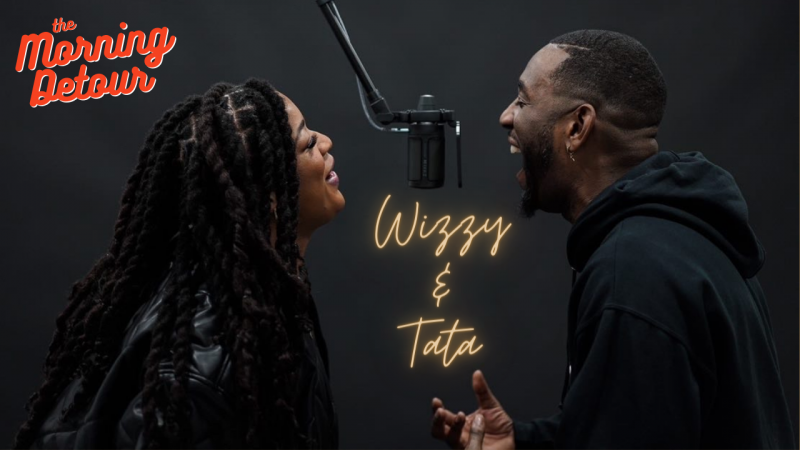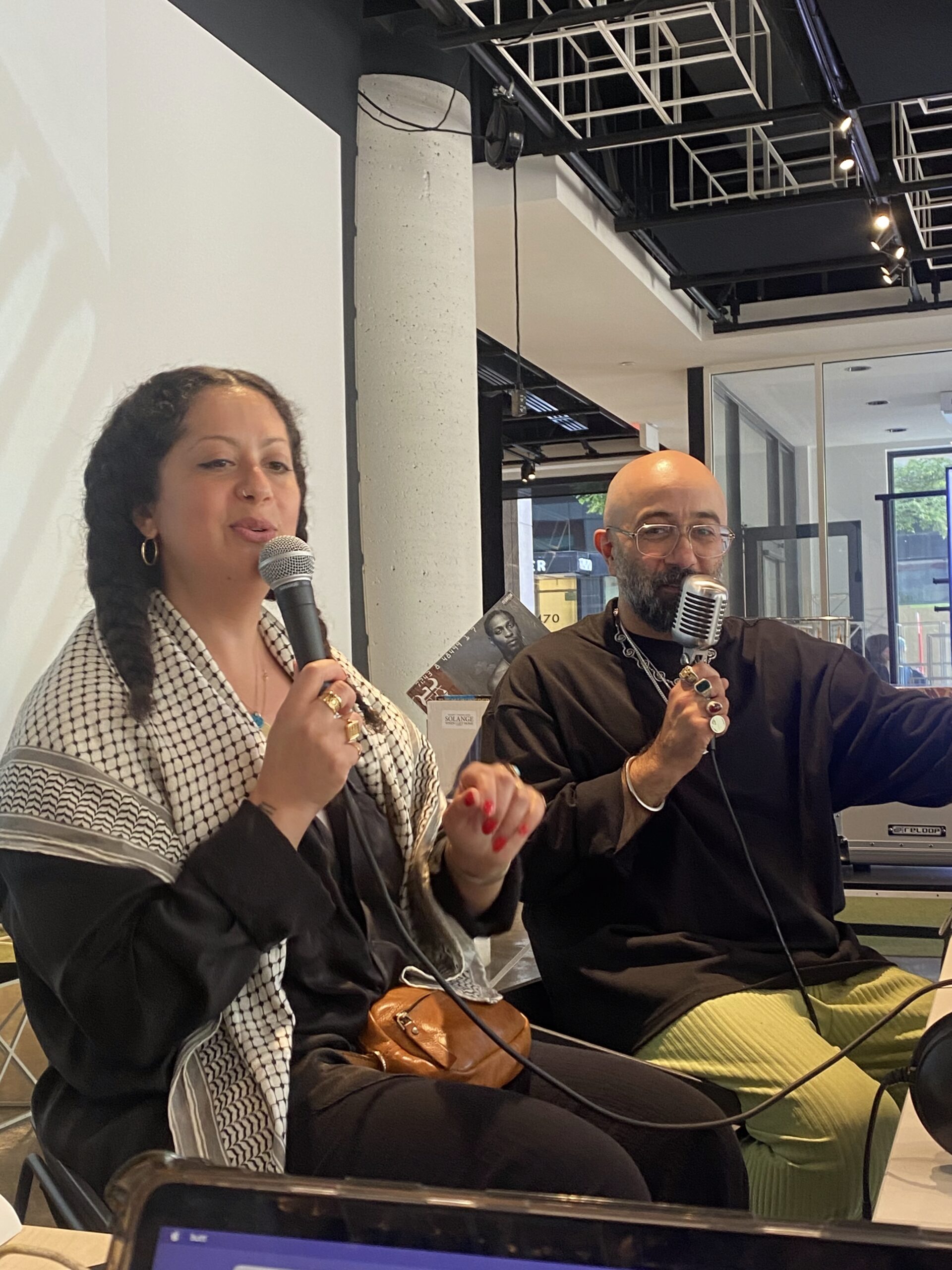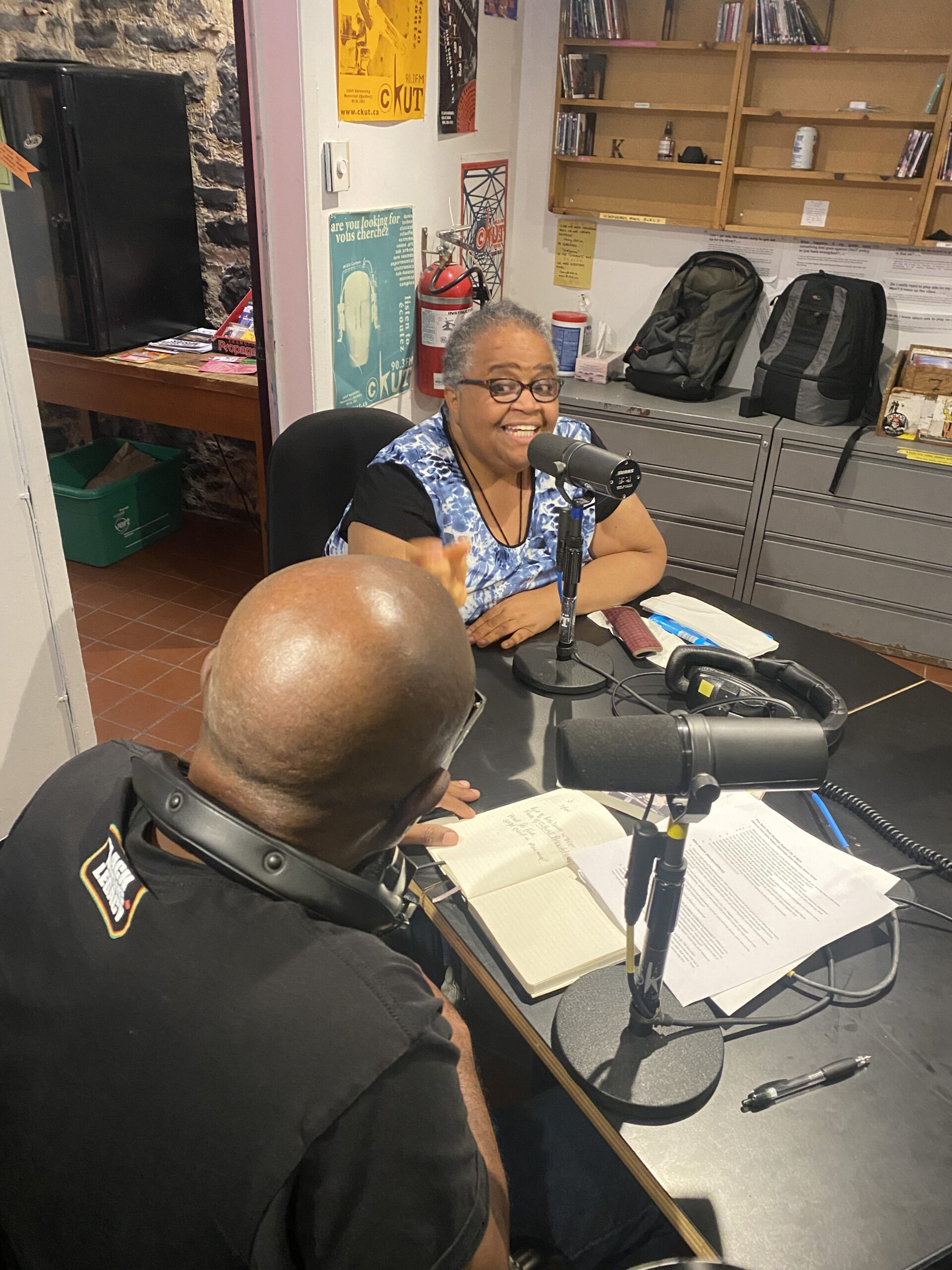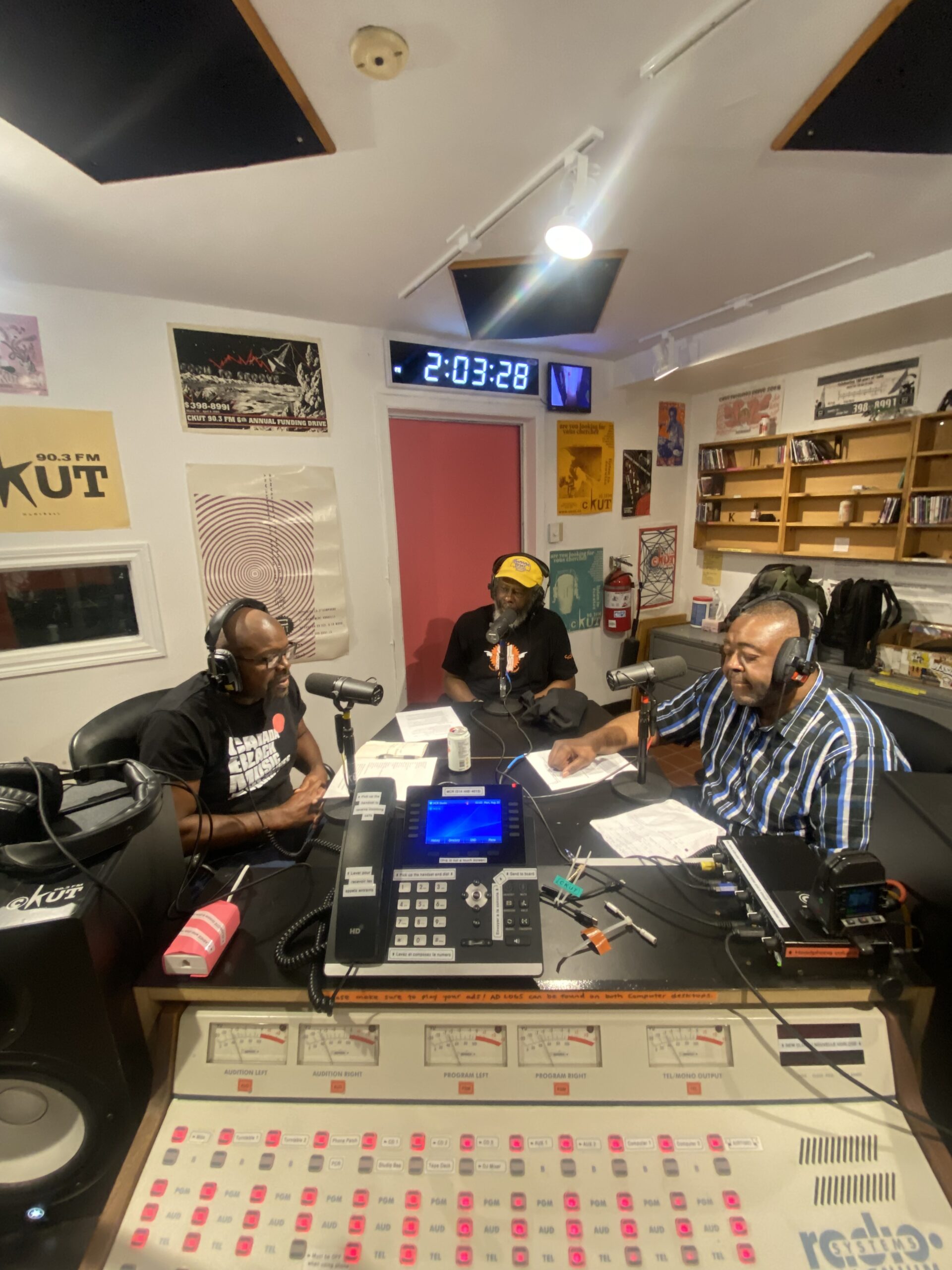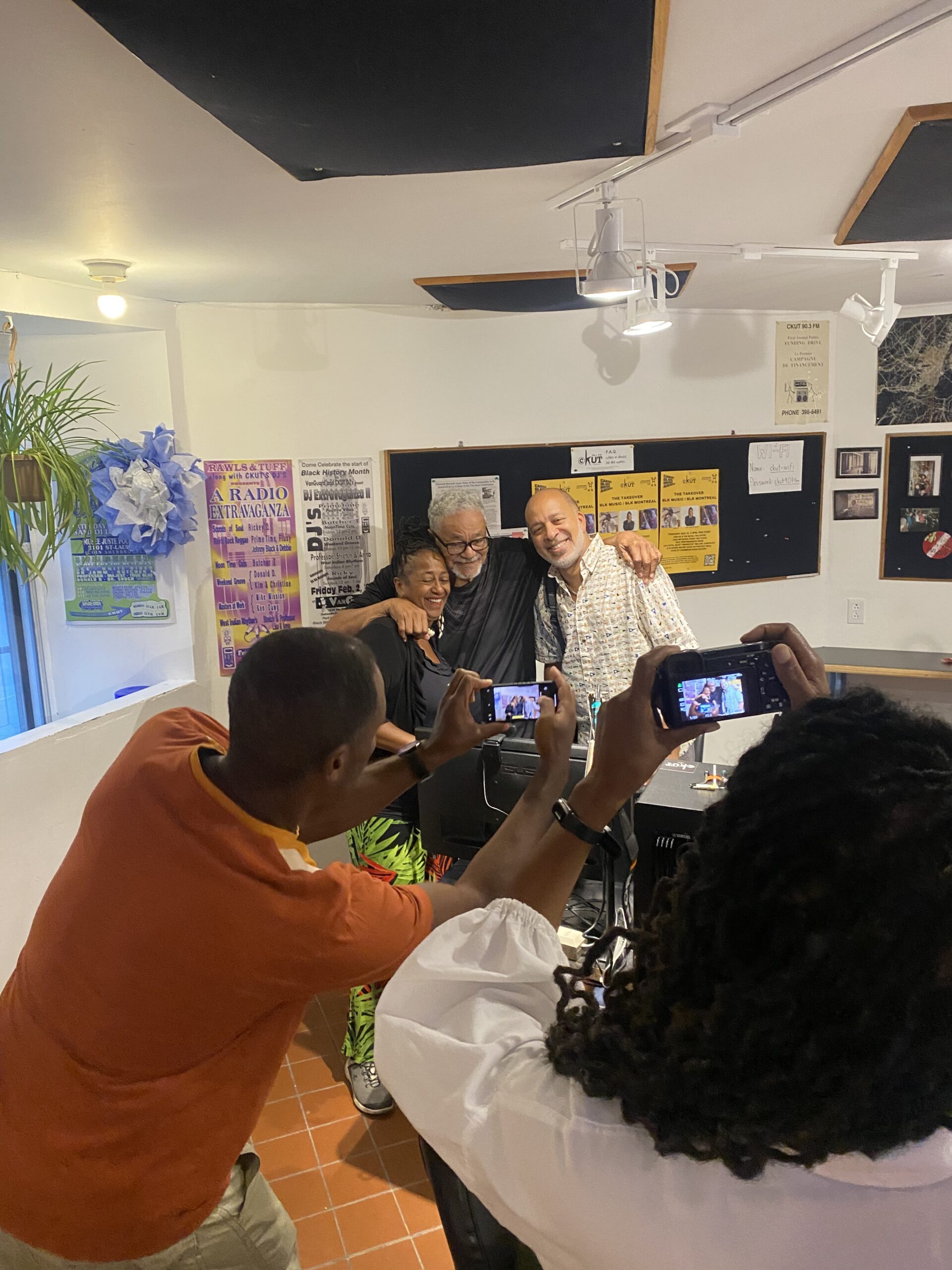Nora Brown and Stephanie Coleman @ Bar Le Ritz
Between spoonfuls of honey, sips of water and tea, and mentions of orange Tic Tacs not actually being orange in Canada, Nora Brown and Stephanie Coleman delivered a soulful and magnetic set of Old-Time classics imbued with their own personal artistic qualities.
The venue quickly filled up as we approached the beginning of the show, with people in their early twenties to couples in their late 60s. In the back of the room, among the various records, CDs, and t-shirts at the merch stand, were yellow bandanas, the profits of which would go directly to the Dahnoun Mutual Aid organization in Gaza. The brightly coloured bandanas tied to showgoers’ bags or hair serve as a reminder of folk music’s history of resistance and protest.
Quebec exclamations could be heard all around me, such as, “elle est bin chouette!” meaning, “she’s so adorable,” as the musicians tuned their instruments. The warm welcome for Nora Brown, Stephanie Coleman, and Jake Xerxes Fussell speaks to a larger culture of folk traditions within Quebec. From songs sung around a campfire to square dancing after a long day at the cabane à sucre, music and dance are embedded within Québécois culture.
Despite suffering from a bout of sickness, Brown’s banjo and vocals with Coleman’s hypnotic fiddle kept the audience on a string for their entire set. They started off with a slowed-down version of “Across the Rocky Mountains” by Roscoe Holcomb – a beautiful ballad featuring a female heroine, a rarity in traditional Old-Time. Brown and Coleman combine their voices and bring life to the lyrics that tell the story of a beautiful young girl who goes to war to save her lover despite her naysayers: “No, my cheeks are not too rosy, nor fingers not too small.” It is not quite fitting to say they fade into an upbeat tune as Coleman’s bow did not even for a millisecond pause as they moved into a rendition of the more fast-paced Kentucky fiddle tune of “Old Blue Bonnets.” During our interview, the topic of tempo came up quite a bit, largely due to my annoying interest, though they did gracefully humour me. They mentioned that the track “Lady of the Lake” off of their EP was especially fun to play because it was the best of both worlds: playing slower in the beginning, allowing listeners to really feel the music and understand the lyrics, but then speeding up into a more upbeat and dancey tune. During “Old Blue Bonnets,” there was a palpable shift in the crowd from watching in awe as two artists brought a story to them to wanting to join in on the jam themselves. Starting the set with those contrasting songs kept the audience on their toes for the rest of the performance. Their set continued with the audience swaying lightly to the tune of “Pretty Fair Damsel” and listening closely to the story of “Blackjack Davey.”
During our interview, we also talked quite a bit about the process of them playing together and integrating the fiddle into banjo tunes. Coleman had mentioned how interesting and fun it was to play with Brown because she learned to play the fiddle in a fresh way with the help of the banjo. This conversation came to mind while watching them, because I witnessed this striking joy and harmony that radiated while playing together. They play with an ease and fluidity that, to me, is only possible because of this partnership that they’ve built. It is this trust and oneness that allows them to create such beautiful music and to push the boundaries of a very old genre, breathing new life into the art. During our conversation about how the two workshop banjo tunes to include the fiddle, Brown had mentioned how the lack of a designated method leads to a certain discomfort. I was quick to mention that it is from these uncomfortable spaces that the most special and beautiful art emerges, but I hadn’t quite realized just how significant their trust in each other was to overcoming these uncharted waters and producing such remarkable music.
Another detail I noticed that is demonstrative of this closeness is the way the two artists lean into each other when not singing. It could be because they’re simply trying to maintain tempo and coherence, but them leaning in like they were playing to each other added a level of intimacy that I rarely see at shows nowadays. In many ways, some shows have begun to feel somewhat transactional, where showgoers feel like they deserve acknowledgement for having bought a ticket and shown up. I think that we’ve seen the burgeoning expectation of inclusion, but I believe that for some art, witnessing is more powerful than participation. In that, a large part of the experience for me lay in bearing witness to the duo’s unique musical expression. Ultimately, this leads back to the roots of traditional Old-Time music, where performance and showmanship are not pillars of the genre, but rather sharing and community.
As the opener for the talented Jake Xerxes Fussell, I believe that those in the audience who experienced their first encounter with Old-Time music left with piqued interest and a willingness to explore their curiosity. Nora Brown and Stephanie Coleman are incredible emissaries of the genre, pulling in new listeners with their haunting and beautiful renditions of traditional songs. More importantly, they carry the torch of being storytellers, introducing new ears to the stories of Appalachia and the themes embedded within these stories, such as labour struggle, resistance, and protest, through music.
Concert review by Janice Wu
